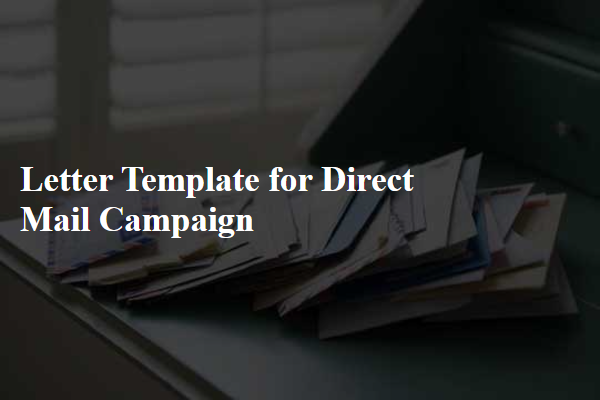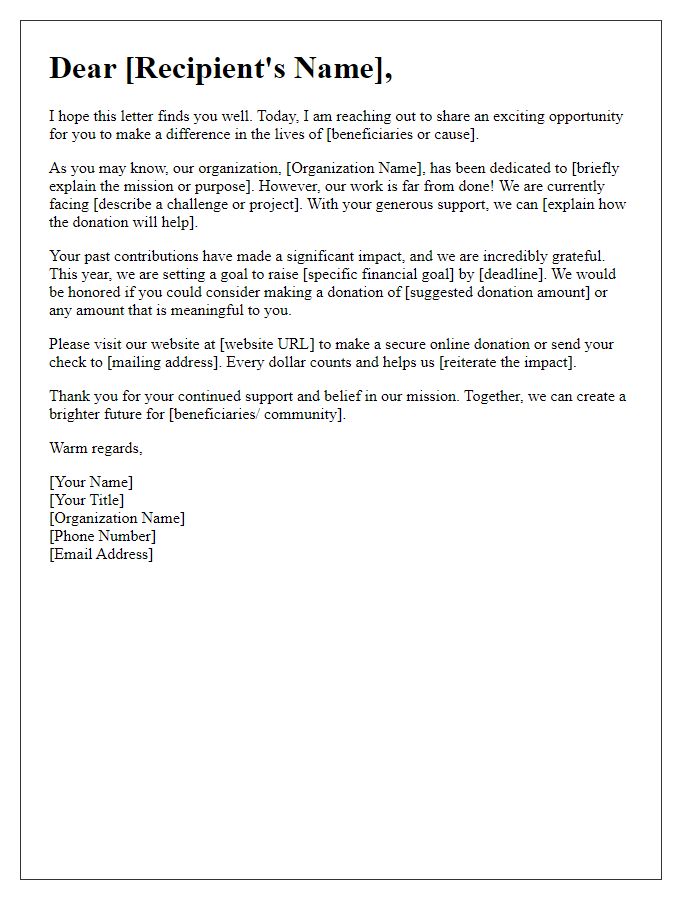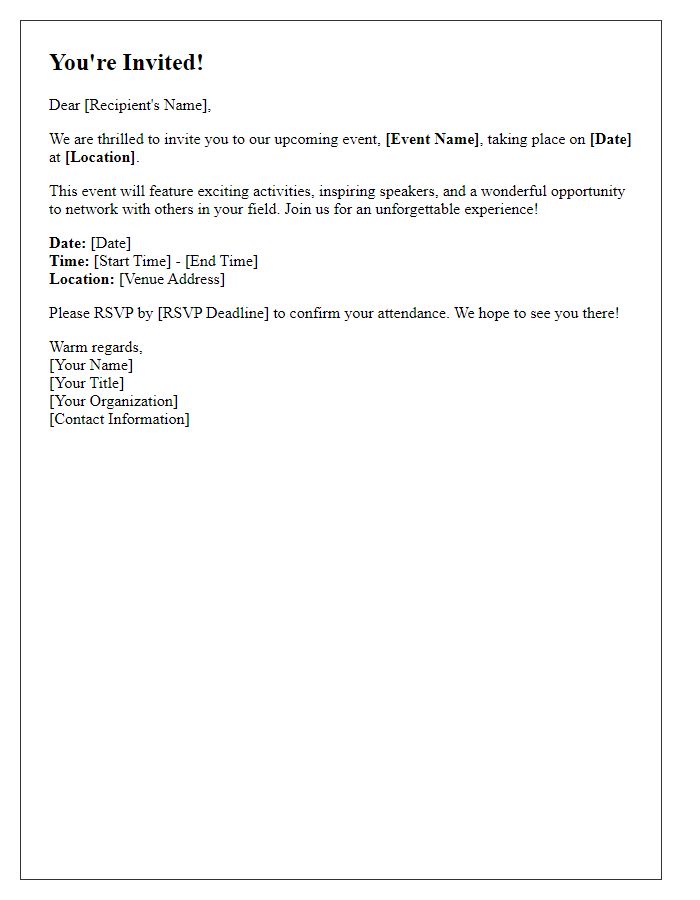Are you looking to effectively connect with your audience through direct mail? Crafting the perfect letter template is key to capturing attention and driving engagement. A well-structured letter can convey your message clearly while enticing your readers to take action. Dive into our article to discover tips and templates that will elevate your direct mail campaigns!

Target Audience Segmentation
Target audience segmentation for direct mail campaigns involves categorizing potential customers based on specific characteristics such as demographics, buying behavior, and interests. For instance, age groups (millennials, Gen X, baby boomers) may receive tailored content that resonates with their unique experiences and preferences. Geographic location (urban vs. rural) also plays a crucial role, influencing the types of products or services promoted. Psychographic factors, such as lifestyle choices (eco-conscious consumers), are essential in determining the messaging tone and design of the campaign. By analyzing data sources like purchase history and online engagement metrics, companies can create targeted mailing lists that increase response rates and foster stronger connections with their audience. Effective segmentation can lead to higher conversion rates and improved return on investment (ROI) for marketing efforts.
Compelling Value Proposition
An effective direct mail campaign relies heavily on a compelling value proposition that resonates with the target audience. Crafting engaging content can significantly impact response rates. Illustrate the unique benefits of the product or service being promoted. Highlight specific features such as the exceptional quality of materials used, exclusive discounts--up to 30% off retail prices--and limited-time offers to create urgency. Include a call to action that encourages immediate engagement, directing customers to visit a website or call a dedicated number for inquiries. Personalization, through addressing recipients by name and referencing their specific interests or needs, can further enhance the appeal and effectiveness of the campaign, ultimately leading to increased customer acquisition and loyalty.
Personalized Messaging
Personalized messaging in direct mail campaigns can significantly increase engagement and response rates among target audiences, such as potential customers in specific demographics. Tailoring content with the recipient's name, location, or interests, creates a sense of relevance and connection. For example, utilizing data from recent purchase history, such as a local sporting goods store, a campaign could highlight specific products that align with their past buying behavior. Additionally, implementing variable data printing allows for customization at scale, addressing individual recipients with personalized promotions or offers unique to their zip codes. Personalized direct mail can capture attention more effectively than generic messages, ultimately driving higher conversion rates and fostering brand loyalty.
Call to Action
Effective direct mail campaigns often utilize call-to-action strategies to drive engagement and responses from recipients. A well-crafted call to action (CTA) encourages immediate reactions, such as visiting a website, calling a phone number, or redeeming a special offer. For instance, the CTA might direct potential customers to a limited-time promotion available until December 31, 2023, emphasizing urgency. Utilizing eye-catching phrases like "Act Now!" or "Join Today!" can enhance response rates. Research shows that including a clear CTA in direct mail pieces leads to a 45% increase in customer engagement, making it an essential element of the marketing mix.
Branding Consistency
Branding consistency is crucial for businesses aiming to establish a strong identity in competitive markets. Companies like Coca-Cola, known for its distinctive red and white logo, maintain a unified visual presence that resonates with consumers. Consistent messaging across various platforms, including social media, print advertisements, and websites, reinforces brand recognition and trust. Fonts, color palettes, and imagery, meticulously chosen for their psychological impact, contribute to a cohesive brand experience. Research indicates that consistent branding can increase revenue by up to 23%, highlighting the importance of a recognizable style in marketing strategies.













Comments